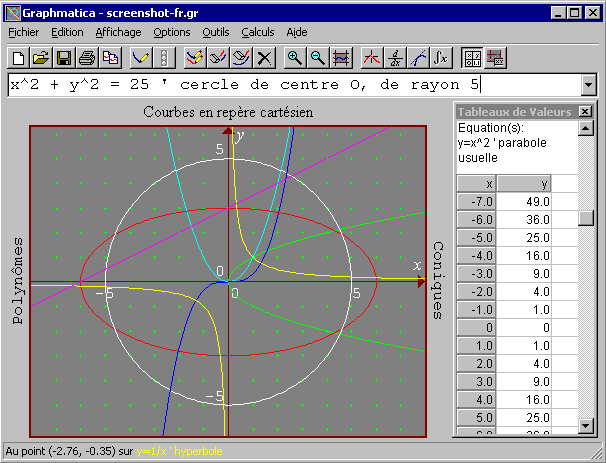
the intersection points of the graph of the function and the x-axis.

Therefore for the third square the number of grains of wheat is equal to 2.įor relations such as equations containing y2, the derivative is only found for the function with the positive root. "CubeRoot." Wolfram Language & System Documentation Center.
#Free graphmatica software#
roots 600 solve function on TI-83 plus algebra opertions software quadratic equations with square roots casio calculator solve third order equation. Outside temperature over a day can be modelled as a sinusoidal function. Q1) Use your spreadsheet to write down the value of the square roots of the. Wolfram Language & System Documentation Center.Graphmatica Help - Graphing Families of Functions GRAPHMATICA CUBE ROOT FUNCTION SOFTWARE The free variable a is fundamentally different because you can specify not just a single value, but a range of possible values that it can take. This allows you to graph families functions or level curves of a 3-D surface easily. Use the new graphing calculator Graphmatica in Downloads for a computer graph. Step 1: Graph the parent function by creating a table. For instance, y = a*cos(x) will graph cosine curves of varying amplitudes, and x^2+y^2 = a will draw level curves of the surface f(x,y) = x^2+y^2. e) A cubic polynomial P(x) has a double root at x.

Add/subtract the x-values by h and add/subtract the new y-values by. You don't even need to know the syntax described below to use this feature, since you can enter the needed values in the Variables Panel and Graphmatica will insert them in the equation for you.

If you don't specify a range for a, Graphmatica will take the current values from the Variables Panel for the start of the range, end of the range, and amount to step by. (You can also specify a negative step value as long as the end of the range is less than the start.) Graphmatica starts by graphing the function with a set to the start of its range, and then increments a by the step value and draws another graph until a exceeds the end of its range. To type this information in on the command-line, add the domain specifier cannot be graphed because for a=2, it does not describe a continuous function. The other free variables b and c are described in Using Free Variables.
#Free graphmatica update#
You can change the value of a free variable after you have typed in equations and Graphmatica will automatically update and redraw all of the graphs using it with the new value.


 0 kommentar(er)
0 kommentar(er)
